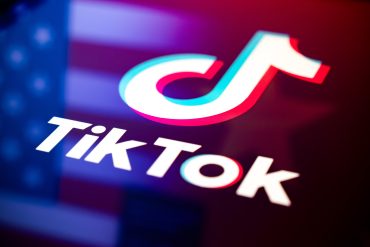
- Gaming & Entertainment
TikTok’s Pay Transparency Videos Are Changing Money Education
6 minute read

Social media creators spark financial literacy movement as TikTok paycheck breakdowns reach millions of young viewers
Three Key Facts
- TikTok “payday routine” videos drive financial transparency movement with creators like Daniela Martinez sharing detailed breakdowns of weekly paychecks, including her $1,500 split into 50% bills, 30% savings, and 20% spending.
- Gen Z leads salary transparency push across social platforms as legislative actions mandate pay disclosure in California, New York, Washington, Rhode Island, and Illinois.
- TikTok monetizes financial education content through AI-driven Creator Marketplace partnerships and virtual gift systems, transforming peer-to-peer learning into revenue streams.
Introduction
Social media platforms are reshaping financial education as creators share intimate details of their payday routines with millions of viewers. TikTok has emerged as the primary hub for this transparency movement, where users break down their actual paychecks and demonstrate real-world budgeting strategies.
The trend represents a fundamental shift in how younger generations approach financial literacy. Rather than relying on traditional educational resources, Gen Z and Millennials turn to relatable content creators who openly discuss salaries, expenses, and money management techniques.
This democratization of financial knowledge carries significant implications for both personal finance education and social media business models. Platforms capitalize on high engagement rates while users gain practical insights from peer experiences.
Key Developments
The payday routine phenomenon centers on creators filming themselves immediately after receiving paychecks. These videos detail exact dollar amounts allocated to rent, groceries, savings, and discretionary spending.
Daniela Martinez, a Miami site safety manager, exemplifies this approach by transparently sharing her $1,500 weekly paycheck breakdown. Her systematic allocation demonstrates practical budgeting while educating viewers about percentage-based financial planning.
Helen Nguyen, an Albuquerque nurse practitioner earning over $110,000 annually, emphasizes pay transparency after her own experiences living paycheck to paycheck despite substantial income. Her content focuses on the gap between earning and effective money management.
Lexi Larson provides detailed walkthroughs of managing her $70,000 annual salary, explaining her $1,997 paycheck allocation process. She consistently pays off credit cards in full and sets aside $700 for fixed expenses before addressing other financial priorities.
Market Impact
TikTok experiences increased user engagement as financial content drives platform stickiness and session duration. The company leverages this trend through its Creator Marketplace, connecting finance influencers with brand partnerships.
Traditional financial education providers face disruption as informal peer-to-peer learning gains popularity. Young consumers increasingly prefer accessible, relatable content over conventional financial advisory services.
The movement coincides with legislative changes requiring salary transparency in multiple states. This regulatory backdrop amplifies social media discussions about compensation and financial planning.
Creator monetization expands beyond traditional advertising as virtual gifts and merchandise sales supplement income streams. Financial transparency trends generate substantial audience growth for participating creators.
Strategic Insights
The payday routine trend reveals broader shifts in financial education consumption patterns. Younger demographics demonstrate preference for authentic, unpolished content over professionally produced educational materials.
Social media platforms benefit from this high-engagement content category while positioning themselves as educational resources. TikTok’s algorithm promotes financial content that generates strong user interaction and extended viewing times.
Traditional financial institutions must adapt to changing consumer expectations around transparency and accessibility. The success of informal financial education suggests opportunities for hybrid approaches combining professional expertise with social media delivery methods.
Creators face both opportunities and risks in sharing detailed financial information. While transparency builds audience trust and engagement, it can also lead to employment consequences and personal security concerns.
Expert Opinions and Data
David Straughan, MarketWatch Guides personal finance researcher, observes that young people demonstrate unprecedented openness about financial situations compared to previous generations. This cultural shift enables more informed financial decision-making among younger demographics.
Hannah Williams advances the transparency movement through Salary Transparent Street, which has gained significant TikTok following by documenting real compensation discussions. Her project demonstrates growing appetite for authentic financial conversations.
Gaby Mendes, a podcast host, notes that TikTok’s amplification capabilities impact movements around transparency and equality. The platform’s reach enables individual creators to influence broader societal discussions about compensation and financial planning.
Industry observers acknowledge both benefits and limitations of social media financial advice. While praising the democratization of financial knowledge, experts recommend supplementing informal guidance with professional consultation for complex financial decisions.
Conclusion
TikTok’s payday routine trend represents a significant evolution in financial education delivery and consumption. The movement combines authentic peer learning with platform monetization strategies, creating new paradigms for both education and creator economies.
The transparency movement reflects broader societal demands for open financial discussions while challenging traditional taboos around salary disclosure. Legislative support for pay transparency reinforces this cultural shift toward greater financial openness.
Social media platforms continue leveraging educational content for user engagement while creators balance transparency benefits against potential personal and professional risks. This dynamic shapes the future intersection of financial literacy, social media, and creator-driven education models.








